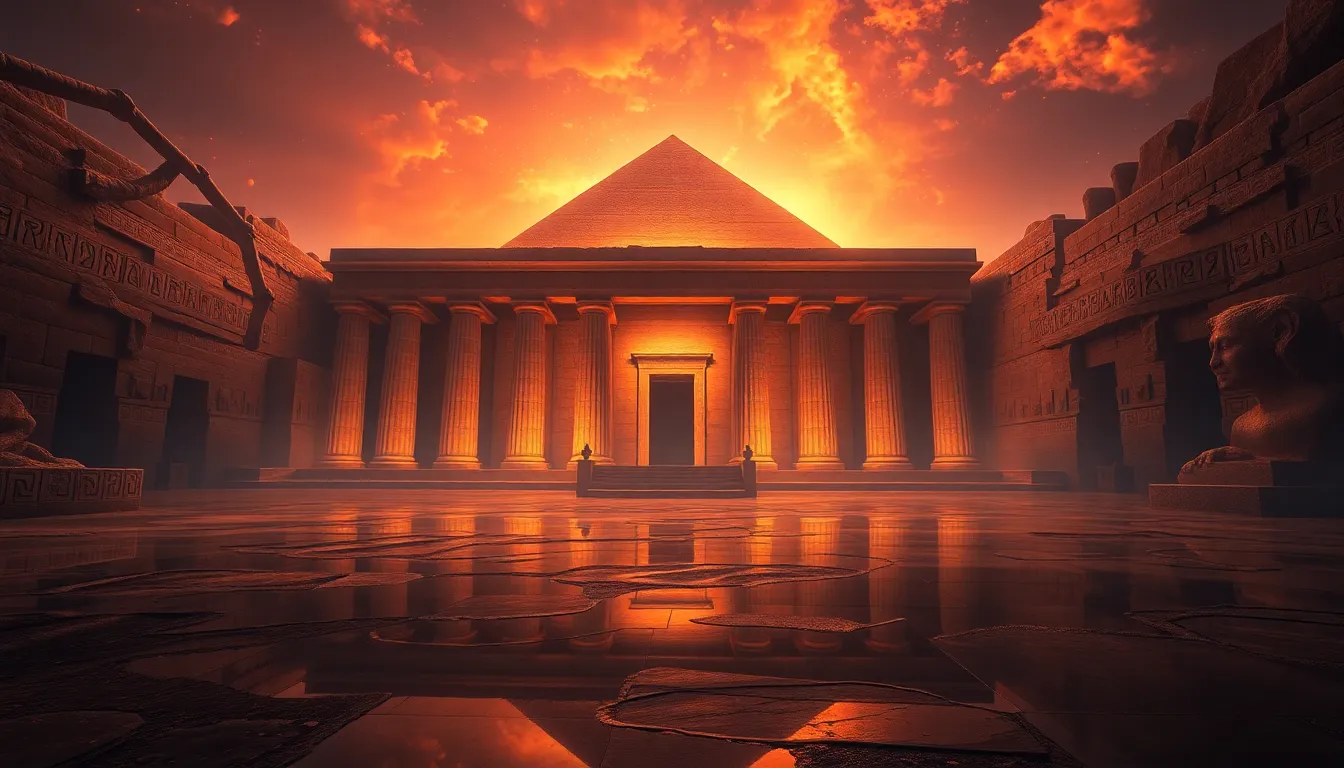The Pharaoh’s Tomb: A Reflection of Divine Kingship
I. Introduction
Ancient Egyptian civilization is renowned for its rich tapestry of beliefs and practices, particularly those surrounding kingship. Central to these beliefs is the concept of the Pharaoh as not only a ruler but also a divine entity. The Pharaoh’s tomb serves as a crucial reflection of this divine status, encapsulating the intersection of power, spirituality, and the afterlife. This article aims to explore the significance of the Pharaoh’s tomb in ancient Egypt and its role in affirming the divine kingship of the Pharaohs.
II. The Concept of Divine Kingship in Ancient Egypt
Divine kingship in ancient Egypt referred to the belief that the Pharaoh was chosen by the gods to rule over the people. This concept established the Pharaoh as more than a political leader; he was a mediator between the gods and humanity.
- Definition of Divine Kingship: The notion that the Pharaoh possessed divine attributes and was imbued with the authority of the gods.
- The Pharaoh as a Mediator: The Pharaoh was seen as the intermediary who communicated the will of the gods to the people, ensuring cosmic order (maat).
- Historical Context: Throughout different dynasties, the authority of the Pharaoh was often justified through divine lineage, with many claiming descent from gods such as Horus or Ra.
III. Architecture and Design of the Pharaoh’s Tomb
The architecture of the Pharaoh’s tomb is a testament to the civilization’s engineering prowess and its beliefs about the afterlife and divine kingship. Various types of tombs were constructed, each with distinct symbolism.
- Mastabas: Early tombs characterized by flat-roofed structures, serving as the precursor to the pyramid.
- Pyramids: Monumental structures that represented the Pharaoh’s ascent to the heavens, symbolizing the divine connection.
Symbolic elements were integrated into the tomb design, such as:
- Orientation towards the cardinal points, often aligning with celestial bodies.
- Intricate carvings and hieroglyphs depicting the Pharaoh’s journey to the afterlife.
The relationship between tomb design and divine representation is evident in how the architecture aimed to mirror the heavenly realms, reinforcing the Pharaoh’s divine status.
IV. Funerary Practices and Rituals
Burial rituals were fundamental in affirming the Pharaoh’s divine status, ensuring a safe passage to the afterlife and maintaining cosmic order.
- Importance of Burial Rituals: Rituals such as mummification were believed to preserve the body for eternity, reflecting the belief in immortality.
- Common Practices: These included the offering of food, amulets, and other goods to accompany the Pharaoh into the afterlife.
- Role of the Afterlife: The afterlife was viewed as a continuation of the Pharaoh’s reign, where he would maintain his divine authority over the living.
V. Art and Iconography in the Tomb
Art and iconography within the tombs provide valuable insights into the beliefs and practices surrounding divine kingship.
- Murals and Inscriptions: Tomb walls were adorned with murals depicting the Pharaoh’s life, accomplishments, and divine interactions.
- Depictions of Deities: The Pharaoh was often shown in close proximity to gods, illustrating his role as a divine representative on Earth.
- Symbolism of Artifacts: Artifacts found within the tomb, such as the ankh (symbol of life) and the crook and flail (symbols of kingship), reinforced the Pharaoh’s divine authority.
VI. The Pharaoh’s Tomb as a Political Statement
The tomb was not just a burial site but a powerful statement of the Pharaoh’s authority and legitimacy.
- Reflection of Power: The grandeur of a tomb served as a testament to the Pharaoh’s power, intended to intimidate rivals and inspire loyalty.
- Legitimization of Rule: Tomb inscriptions often emphasized the Pharaoh’s divine right to rule, reinforcing their authority among the people.
- Notable Examples: The tomb of Tutankhamun, with its wealth and intricate design, exemplifies the political statement of divine kingship, while Ramses II’s tomb reflects his long reign and divine favor.
VII. Modern Discoveries and Their Implications
Recent archaeological advancements have shed new light on the understanding of divine kingship and the significance of the Pharaoh’s tomb.
- Archaeological Advancements: Technologies such as ground-penetrating radar have enabled the discovery of previously hidden tombs, expanding our knowledge of burial practices.
- Reshaped Understanding: Findings, such as the wealth of offerings and the complexity of burial rituals, have altered perceptions of the Pharaoh’s divine role.
- Contemporary Views: These discoveries have sparked renewed interest in ancient Egyptian beliefs, highlighting the sophistication of their society.
VIII. Conclusion
In summary, the Pharaoh’s tomb stands as a profound symbol of divine kingship in ancient Egypt. It reflects the intertwining of political power and spiritual authority, serving as a testament to the beliefs that shaped one of history’s most fascinating civilizations. The legacy of ancient Egyptian beliefs continues to influence our understanding of past societies and their complex relationships with divinity and authority.
The significance of tombs in understanding ancient civilizations cannot be overstated, as they offer invaluable insights into the cultural, spiritual, and political dynamics of the time.




